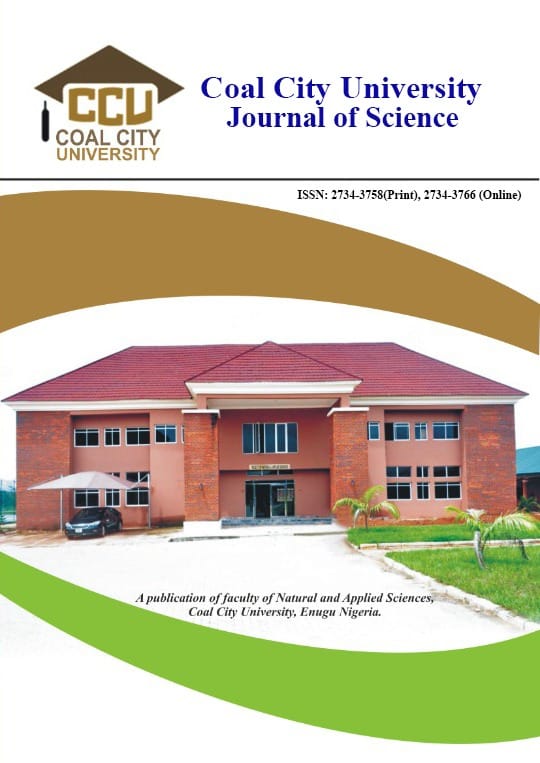RADIOLOGICAL ASSESSMENT OF SOIL SAMPLES FROM SELECTED DUMPSITES IN MOWE, OGUN STATE NIGERIA
Keywords:
Dose, Pollution, Contamination, Municipal, Radioactivity, Radiation, and Radionuclide.Abstract
The activity concentration of soil samples from selected dumpsites within Mowe, Ogun State, Nigeria, was determined. These dumpsites serve as recipients of municipal waste from diverse sources. Two soil samples each were collected from five selected dumpsites, and Gamma Spectrometry analysis was performed to determine the specific activity of radionuclides using a NaI (Tl) scintillation detector. The results showed that the activity concentrations of radionuclides in the soil samples ranged from 4.94 ± 0.47 Bq/kg to 28.10 ± 2.68 Bq/kg for ²³²Th, 1.81 ± 0.28 Bq/kg to 125.27 ± 21.36 Bq/kg for ²³⁸U, and 779.07 ± 63.93 Bq/kg to 1746.61 ± 11.82 Bq/kg for ⁴⁰K. Furthermore, the calculated mean values for the external hazard index (H_{ex}) and radium equivalent activity (Ra_{eq}) were 0.485 and 165.74 Bq/kg, respectively, both of which are below the permissible safety limits of 1.0 and 370 Bq/kg. However, the average values of the absorbed dose rate and the gamma representative index (I_γ), recorded as 82.55 nGy/h and 1.164 Bq/kg, respectively, were higher than the worldwide average values of 55 nGy/h and 1.0 Bq/kg. Despite this, the external hazard index remained less than unity, and the annual effective dose rate (outdoor) was lower than the recommended limit of 1.0 mSv/yr. It is therefore concluded that the soil samples from the studied dumpsites do not pose any significant radiological hazard to the surrounding environment and human population.




